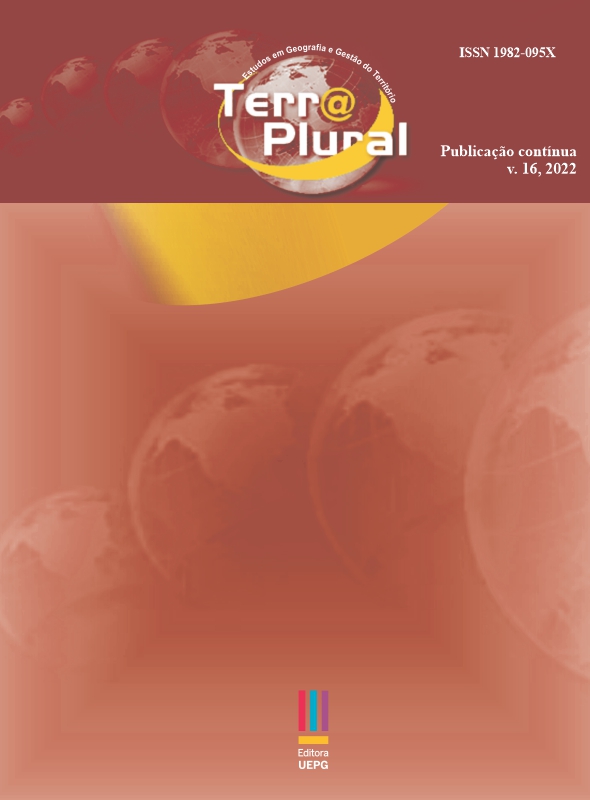Strophomenata (Brachiopoda) en depósitos devónicos del estado de Paraná, Brasil: un estudio de caso
DOI:
https://doi.org/10.5212/TerraPlural.v.16.2221183.045Palabras clave:
Rhynchonelliformea, Formación Ponta Grossa, Formación São Domingos, Devónico, Tafonomía.Resumen
Strophomenata son braquiópodos Rhynchonelliformea, extintos y presumiblemente confinados al Paleozoico. La clase incluye los órdenes Strophomenida, Productida, Orthotetida y Billingsellida. Tres de los cuatro órdenes tienen representantes en los sedimentos del Paleozoico brasileño: Strophomenida (Superfamilia Strophomenoidea), Orthotetida (Suborden Orthotetidina) y Productida (subórdenes Chonetidina y Productina). Por lo tanto, se realizó un relevamiento bibliográfico y un análisis tafonómico por medio del modo de ocurrencia de la clase en los depósitos sedimentarios de la Cuenca del Paraná, en el estado de Paraná. Así, se reconocieron formalmente los estrofénidos que representan los órdenes Productida (Suborden Chonetidina) y Orthotetida (Suborden Orthotetidina), estando ambos presentes en las formaciones Ponta Grossa y São Domingos. Se identificaron seis modos de ocurrencia, que sugieren que los estrofoménidos encontrados la Formación Ponta Grossa, en el Estado de Paraná, son potencilaes indicadores paleoambientales, de transición entre el shoreface inferior y el offshore transicional.
Descargas
Descargas
Publicado
Cómo citar
Número
Sección
Licencia
Derechos de autor 2023 Gabrieli Goltz, Elvio, Roberto Videira-Santos, Iniwara Kurovski Pereira

Esta obra está bajo una licencia internacional Creative Commons Atribución-NoComercial-SinDerivadas 4.0.
La revista Terr@ Plural retendrá el copyright de los trabajos publicados. Los derechos tienen referencia con la publicación del trabajo en cualquier parte del mundo, incluyendo los derechos a Las renovaciones, expansiones y diseminaciones de la contribución, así como otros derechos subsidiarios. Los autores tienen permiso para la publicación de la contribución en otra medio, materia impresa o digital, en portugués o en otra traducción, desde que los créditos tenidos sean dados a la Revista Terr@ Plural. Si permite el autoarchivo de los artículos publicados, en repositorios institucionales, temáticos o páginas webs personales en la versión pdf bajada del site de la revista.















